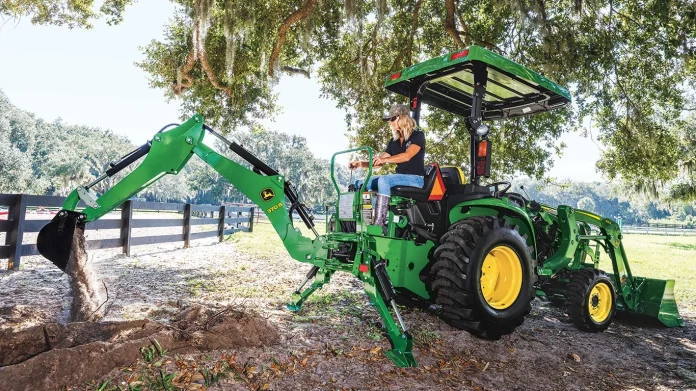In farming, landscaping, or any scenario that relies on tractors, the right tractor attachments can significantly boost productivity and add convenience to daily tasks. However, with the wide range of tractor attachments available on the market, how do you choose the most suitable equipment? This article combines advice from various sources to provide you with a comprehensive and practical guide to purchasing tractor attachments.
Define Your Needs: Start from Reality
The first step in purchasing a tractor accessory is identifying the specific problem you want to solve. Different attachments are designed for different tasks, so you need a clear understanding of what you aim to accomplish before buying. For example, if you need to speed up tasks like snow removal or mowing, an efficient tractor attachment is your best choice. On the other hand, if you want to avoid purchasing separate equipment, tractor attachments can be a cost-effective alternative, such as replacing a standalone heavy-duty lawnmower with a lawnmower attachment.
Select the Appropriate Attachment Type
Depending on your needs, you may require one or more tractor attachments. Here are some common types and their uses:
- Arm Mower: Ideal for mowing on complex terrain, such as hillsides or irregular areas.
Slope Mower: Designed for sloped or uneven terrain, reducing the labor of manual cleaning. - Rotary Mower: Suitable for quickly mowing large areas with efficiency and ease.
PTO Generator: Provides power for other equipment, essential for farms or construction sites. - PTO Vacuum Machine: Cleans or handles materials, especially useful in agriculture or construction.
- Fence Clippers: Trim fences or shrubs to maintain a neat appearance.
- Transport Pallet: Eases the movement of heavy materials, boosting efficiency.
- Concrete Mixer: Useful for construction or repair tasks, saving time and effort.
- Sweeper: Keeps fields or roads clean and well-maintained.
- Wood Splitter: Processes wood for farm or commercial purposes.
- Trencher: Excels at digging ditches for irrigation or construction projects.
- Fertilizer Applicator: Ensures uniform fertilization, enhancing farm efficiency.
Key Considerations When Buying
Whether you’re purchasing new or used tractor accessories, keep these factors in mind:
- Equipment Condition
Inspect the equipment thoroughly. For used items, check for signs of wear, rust, or damage. If possible, test the attachment or request a demonstration to ensure it functions properly. For new accessories, inspect for factory defects or transit damage. A careful pre-purchase inspection can prevent future issues. - Compatibility
Ensure the attachment is compatible with your tractor’s make and model. Incompatible accessories may not work correctly and could even damage your tractor. If unsure, consult a professional or dealer. Compatibility is crucial for smooth and efficient operation. - Service Life
For used equipment, evaluate how long it has been in use. Check the hour meter and total runtime. Generally:
0-1,000 hours: Low mileage, good condition, long service life.
1,000-3,000 hours: Moderate usage; inspect key components carefully.
3,000-6,000 hours: High mileage; evaluate thoroughly for potential issues.
6,000+ hours: Excessive mileage; consider only with a limited budget. - Quality and Durability
Choose accessories made of durable materials, especially for use in harsh environments. High-quality attachments last longer and perform better, reducing long-term costs. Consider reputable brands and user reviews for guidance. While initially more expensive, durable equipment saves money through reduced maintenance and replacement expenses. - Cost-Effectiveness
Evaluate the price, service life, and maintenance costs of the equipment to ensure a worthwhile investment. High-quality, cost-effective accessories improve efficiency while minimizing future expenses. - Service Network and Parts Availability
A reliable service network ensures you can easily find replacement parts and technical support. Opt for well-known brands, especially for used equipment, to ensure stability in parts supply. Local service networks can reduce shipping costs and downtime. - Storage and Usage History
For used equipment, investigate its storage and maintenance history. Was it kept in a dry environment? Was it regularly maintained? Proper storage and care significantly extend the equipment’s service life.
Seller Reputation: Choose a Trustworthy Partner
Whether buying new or used tractor accessories, the seller’s credibility is vital. Pay attention to their transparency and honesty. If a seller seems unreliable or withholds information, consider looking elsewhere. Trustworthy sellers provide accurate details about the equipment’s condition, service history, and any known issues. Choosing a reputable seller ensures you get reliable equipment and ongoing support.
Conclusion
When purchasing tractor accessories, clearly defining your needs, selecting the right type, and paying attention to equipment condition, compatibility, and quality are essential for making an informed decision. Whether new or used, considering these factors will help you find the best equipment for your farm or work scenario, boosting productivity and saving costs. We hope these tips provide valuable guidance for your purchasing decisions.

